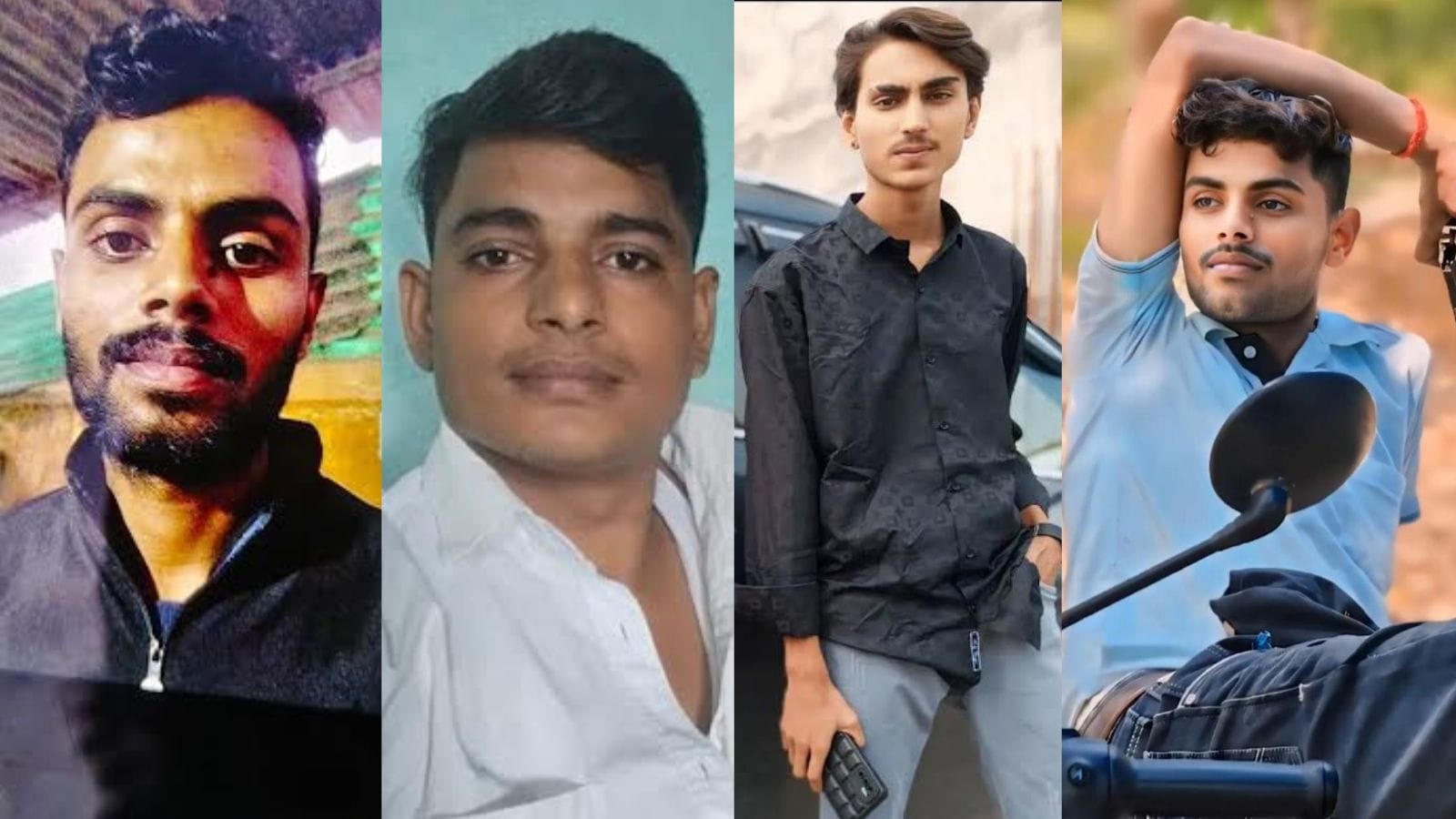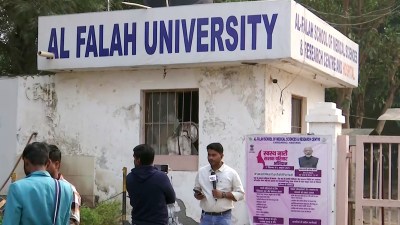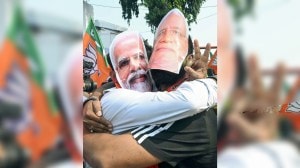Felony, fear, and fight for domination – how Sigma & Co ‘turned murder into a business’ in Bihar’s Sitamarhi
In the early hours of October 23, ring leader Ranjan Pathak and his three associates -- Manish Pathak, Aman Thakur, and Bimlesh Mahto – were killed in a police encounter in Delhi. By then, the gang had been involved in several murders and extortion cases – all in a matter of three months.
 They were allegedly trying to edge out “established networks” of criminals in Sitamarhi, and officials feared their plans could trigger unrest ahead of the November election.(ANI Video Grab)
They were allegedly trying to edge out “established networks” of criminals in Sitamarhi, and officials feared their plans could trigger unrest ahead of the November election.(ANI Video Grab)In the three months before he was killed in an encounter, Ranjan Pathak and his gang, Sigma & Company, had earned notoriety as one of Bihar’s most dangerous men. Allegedly involved in five murders and three extortion cases, they had become a major threat to law and order in the poll-bound state, and the Sitamarhi Police began to intensify their search for the elusive gang.
Then, in the early hours of October 23, 25-year-old Ranjan and his associates — Aman Thakur, Vimlesh Mahato and Manish Pathak — were gunned down in a joint Delhi-Bihar Police operation on Bahadur Shah Marg in Delhi’s Rohini. The gang allegedly opened fire after their Maruti Baleno was intercepted, and at least 50 rounds were exchanged.
According to police, the encounter followed inputs that the gang was planning “something big” around the Assembly polls. They were allegedly trying to edge out “established networks” of criminals in Sitamarhi, and officials feared their plans could trigger unrest ahead of the November election.
“We had already arrested three of their associates earlier and recovered call recordings suggesting this [the plans of something big],” Sitamarhi Superintendent of Police (SP) Amit Ranjan says.
Fight for domination
Police records show Ranjan, the ring leader, had at least eight serious cases – including murder and extortion – while Thakur and the others faced multiple charges. Bounties were announced: Rs 50,000 for Ranjan, Rs 25,000 for the others.
Belonging to a middle-class family in Sitamarhi’s Malahi village, Ranjan’s parents were active in local politics. His father, Manoj Pathak, was a revenue employee; his mother, Vimla Devi, was the local sarpanch.
“He [Ranjan] was fascinated by the glamour of local criminals,” SP Amit Ranjan says.
According to police, Ranjan’s first major crime was the 2019 murder of Abhinandan Singh alias Abhay Singh — a man in a relationship with his cousin. “That did not sit well with him and, with the help of some friends, Ranjan shot Abhay dead,” the SP says.
He was arrested days later — the first of three arrests – and released in 2024 after five years in jail. He would be arrested twice more that year for illegal possession of firearms.
After his release, Ranjan allegedly began bootlegging liquor — banned in the state since 2016 – from Nepal. It was during this phase that he, along with another Sitamarhi native, Shashi Kapoor Jha, recruited young men from the region for their gang, Sigma & Company.
Among his new recruits were Vimlesh Mahato and Aman Thakur.
 According to police, the encounter followed inputs that the gang was planning “something big” around the Assembly polls.
According to police, the encounter followed inputs that the gang was planning “something big” around the Assembly polls.
“This gang of 8-10 people became guns on hire. They would claim responsibility for killings through pamphlets and social media posts — just to build fear and put their stamp,” SP Amit Ranjan says.
Their first murder was that of rival bootlegger Aditya Thakur in Bajpatti on July 18. According to the police, Ranjan’s father, Manoj Pathak, was also arrested in the case. “They [the gangsters] fired six bullets into Aditya,” the SP says.
A spate of targeted murders followed, including the high-profile killing of Ganesh Sharma, former president of the Brahmarshi Samaj, outside his house in Lagma village on September 26. There were also extortion and death threats.
What made the gang more lethal was the way it functioned – according to the police, it had turned “murder into a business” but never engaged in the typical intergang rivalries. “They operated almost like a company. Anyone could pay them for murder,” SP Ranjan says.
The chase
With elections looming, Sitamarhi Police began tracking the gang closely. It was a challenge – the tech-savvy group used encrypted apps to dodge detection.
“They made all their calls through WhatsApp using temporary numbers, public Wi-Fi and borrowed connections,” the SP says.
Soon, investigators began analysing call records to trace the Wi-Fi networks used. That helped locate the gang’s general area. “We found that after committing crimes, they often fled to Nepal. Ranjan’s maternal relatives are from Nepal, so he knew the terrain well. Using his network, the gang would take shelter there, making tracking difficult,” the SP says.
To counter this, police shared information with central agencies such as the Sashastra Seema Bal and Intelligence Bureau, and also alerted Nepal Police. This helped squeeze the gang’s hideouts.
“The gang left Nepal and moved to Delhi. Once they came back, tracking them got relatively easier,” SP Ranjan says.
Police had been tracking the gang for weeks before they were finally gunned down using technical inputs from Varanasi, Ludhiana and Delhi. In the past two months, three of Ranjan’s associates were arrested.
Then, at 2:20 am on October 23, following intelligence that the gang was hiding in Delhi, Bihar and Delhi Police teams intercepted their car near Rohini’s Dr Ambedkar Chowk. In over 50 rounds of fire that followed, Ranjan and his associates — Manish, Mahato and Thakur – were fatally shot. Police claim to have found firearms – including those used in their contract killings – in the car.
According to SP Amit Ranjan, violence was only a tool for Ranjan, whose aim was to “build his brand”.
“This was not a large criminal organisation in the traditional sense. Ranjan wanted to replace older gangs in Sitamarhi and become the most feared name,” he says. “The gang’s aim was to build a brand through fear.”



- 01
- 02
- 03
- 04
- 05



























